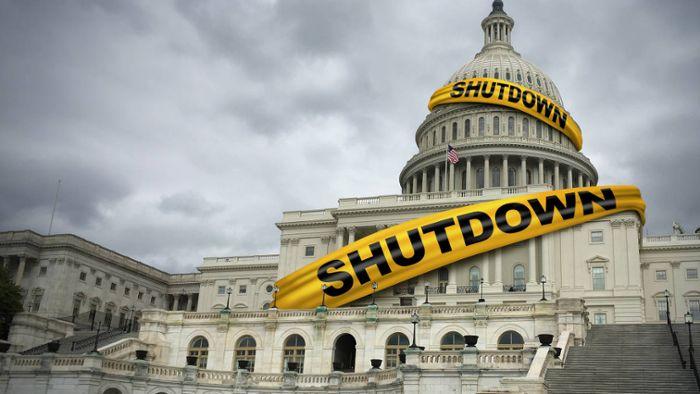The United States government officially entered a shutdown Friday night, as lawmakers remain deadlocked over budget negotiations. With neither former President Donald Trump nor Democratic leaders showing signs of compromise, the standoff has raised fears of prolonged disruption to federal services and uncertainty for millions of Americans. As the stalemate deepens, attention is now focused on whether either side will relent or if the shutdown will continue with no clear end in sight.
Government Shutdown Causes Immediate Disruptions Across Federal Agencies
The ongoing standstill between President Trump and congressional Democrats has triggered an unprecedented shutdown, throwing several federal agencies into immediate disarray. Thousands of government workers have been furloughed, with critical services such as national parks, museums, and certain administrative functions grinding to a halt. The ripple effects are already being felt, with disruptions in the processing of permits and delays in federal employee payments. The impasse is not only straining the government’s operations but also impacting countless Americans who rely on federal services every day.
Key agencies affected include the Department of Homeland Security, the Environmental Protection Agency, and parts of the Department of Veterans Affairs. Essential services related to public safety and national security remain operational but with limited staff. The following table highlights some of the immediate effects across major federal departments:
| Agency | Status | Impact |
|---|---|---|
| National Parks Service | Closed | Visitor access suspended, maintenance halted |
| Environmental Protection Agency | Limited Operations | Delay in regulatory approvals |
| Department of Veterans Affairs | Reduced Staff | Extended wait times for non-urgent care |
- Delayed federal payments: Impacting contractors and government employees alike.
- Stalled administrative functions: Affecting everything from passport processing to tax audits.
- Increased economic uncertainty: Businesses dependent on federal funding face immediate challenges.
Deepening Divide Between Trump Administration and Democrats Hinders Progress
The standoff between the Trump administration and congressional Democrats has escalated, leading to a full government shutdown that shows little sign of resolution. Key issues such as border security funding, healthcare provisions, and immigration reforms remain points of contention, with neither side willing to compromise. This political impasse has disrupted federal operations, impacting millions of government employees and essential services nationwide.
Observers note several core factors contributing to the deadlock:
- Rigid budget demands: The Trump administration insists on increased funding for the border wall, which Democrats reject as excessive and ineffective.
- Political posturing: Both parties aim to maintain leverage ahead of upcoming elections, prioritizing political gain over practical governance.
- Lack of bipartisan dialogue: Limited communication channels have worsened misunderstandings and escalated distrust between leadership.
| Impact Area | Effect |
|---|---|
| Federal Employees | Furloughs and unpaid leave |
| National Parks | Partial closures and reduced services |
| Federal Aid Programs | Delayed approvals and funding pauses |
Economic Impact and Public Services Face Uncertain Future Amid Stalemate
The ongoing government shutdown has sent shockwaves through the nation’s economic framework, casting doubt on the stability of key public services. Federal employees face unpaid furloughs while contractors and small businesses reliant on government spending face mounting uncertainty. Consumer confidence is dipping as markets react to the political impasse, raising concerns about delayed regulatory approvals and halted infrastructure projects.
Critical sectors affected include:
- Healthcare programs experiencing funding interruptions
- National parks and museums closing to public access
- Delayed tax processing and financial aid disbursements
- Reduction in vital community services
| Sector | Immediate Impact | Potential Long-Term Effects |
|---|---|---|
| Public Health | Reduced clinic hours | Delayed medical research funding |
| Transportation | Maintenance delays | Infrastructure deterioration |
| Social Services | Application backlogs | Increased vulnerability for at-risk populations |
Pathways to Resolution Highlight Bipartisan Cooperation and Negotiation Strategies
Despite the ongoing stalemate, key figures on both sides of the aisle have indicated that dialogue remains open, underscoring the potential for bipartisan collaboration. Lawmakers are increasingly advocating for the revival of traditional negotiation forums that emphasize mutual respect and pragmatic compromise. Such forums aim to dismantle partisan gridlock by focusing on shared objectives, including economic stability and national security. Current strategies highlight negotiation approaches like:
- Incremental agreements: Breaking down the shutdown’s issues into manageable, smaller legislative packages for easier agreement.
- Mediation by bipartisan leaders: Senior lawmakers facilitating communication between conflicting parties.
- Anchoring talks in data-driven impacts: Using empirical evidence to steer conversations away from political rhetoric.
To better illustrate successful negotiation techniques from past shutdowns, the table below outlines key bipartisan tactics and their outcomes. These strategies provide a framework that experts believe could help end the current deadlock.
| Strategy | Description | Outcome |
|---|---|---|
| Blended Funding Approaches | Temporary funding with phased objectives | Short-term reopening, longer negotiation window |
| Bipartisan Task Forces | Cross-party committees for focused discussion | Reduced polarization, enhanced trust |
| Public Accountability Measures | Transparent progress tracking shared with constituents | Pressure on leaders to compromise |
The Way Forward
As the government shutdown stretches into an uncertain future, the ongoing impasse between former President Trump and Democratic lawmakers shows little sign of resolution. With critical services disrupted and millions of Americans affected, the stakes continue to rise on both sides. Observers and citizens alike await a breakthrough that could finally restore government operations and bring an end to the political deadlock.




